Intel Atom C3758R Performance
As a quick note: Some users may have seen this missing for a few hours. I saved over a draft when adding a different screenshot, and deleted this section that went to one of the web servers. Oops! Added back.
In terms of performance, it is very close to the fanless unit that we tested previously. We did our 10 runs of the entire benchmark script and we were +/- 1.5% which is within a margin of error.
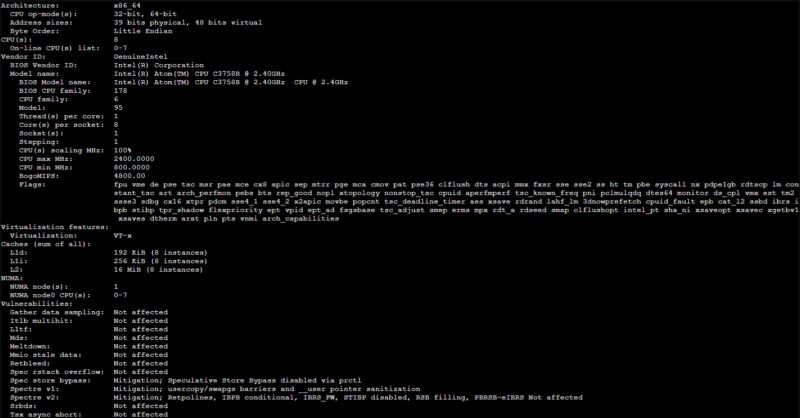
This is a very popular CPU. It is found in network stroage appliances like the TrueNAS Mini XL+ and TrueNAS Mini X+. Since this is designed to only have up to four SSDs (two SATA two PCIe Gen3 x2) and four HDDs (via SFF-8087), this is plenty of CPU for that. Having the built-in Intel X553 is a big reason that they are used in storage appliances.
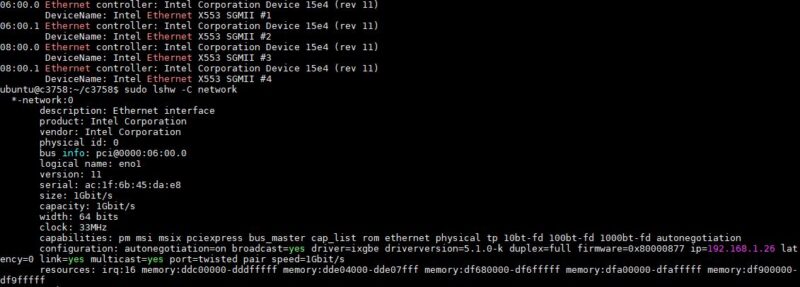
Many think the Atom cores are too slow. They frankly do not make for a great Windows experience (although it runs Windows.) For most stroage, networking, and even infrastructure containers and services, these are fine cores, and are designed to keep frequency transitions minimized to give better performance.
A Word On Routing, Firewall, and VPN Performance
The Intel Atom C3758R powers the Netgate 8200 Max. While we have no issues passing iperf3 traffic over a pair of 10G ports on this machine, Netgate does a bit more testing including firewall and IPSec VPN, and also using IMIX packets instead of simple iperf3 traffic.

Still, the company is able to handle a lot of throughput using this box. On the IPSec VPN side, Netgate is using the pfSense+ feature of using QAT support. That is an accelerator that lets the Atom C3758R punch above its TDP “weight.” The performance is also better on the Linux-based TNSR side. Something important is that this QAT version was good for IPsec with AES-GCM-128 acceleration, but this did not accelerate things like the ciphers behind WireGuard. Still, the QAT aspect is important, especially as it has been folded into Ubuntu 24.04.
Python Linux 4.4.2 Kernel Compile Benchmark
This is one of the most requested benchmarks for STH over the past few years. The task was simple, we have a standard configuration file, the Linux 4.4.2 kernel from kernel.org, and make the standard auto-generated configuration utilizing every thread in the system. We are expressing results in terms of compiles per hour to make the results easier to read:
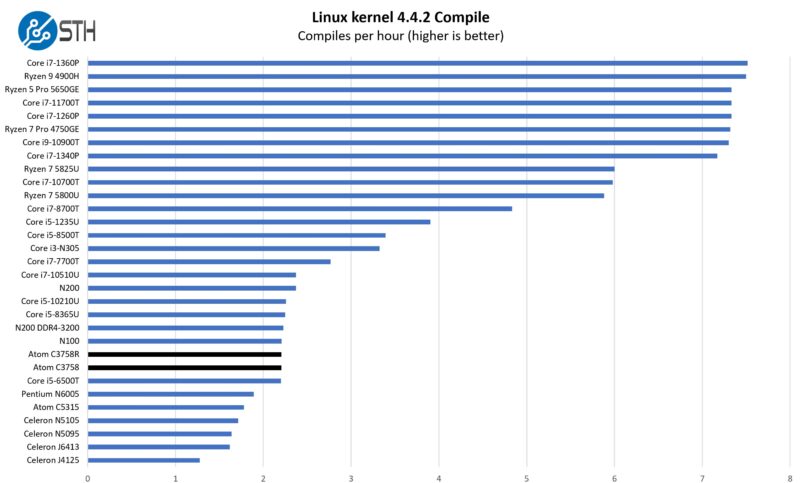
Here, performance is good but nowhere near a modern Core i7 or Ryzen 7. It is more like an Intel N100.
7-zip Compression Performance
7-zip is a widely used compression/ decompression program that works cross-platform. We started using the program during our early days with Windows testing. It is now part of Linux-Bench.
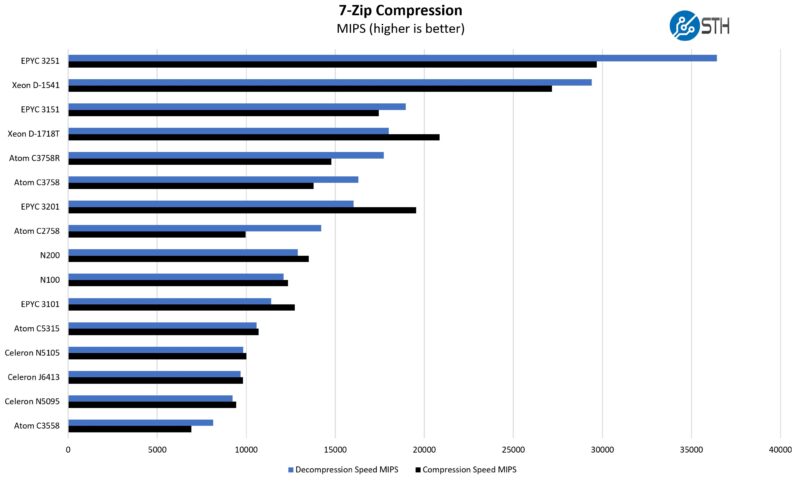
Again, this is good performance, slightly ahead of the N100/N200. Of course, the Atom C3758R has much more I/O than the Alder Lake-N CPUs.
OpenSSL Performance
OpenSSL is widely used to secure communications between servers. This is an important protocol in many server stacks. We first look at our sign tests:
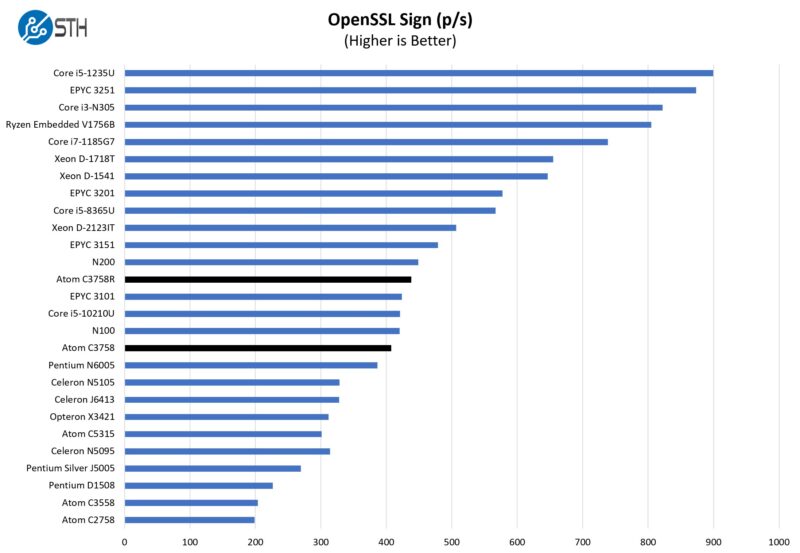
Here are the verify results:
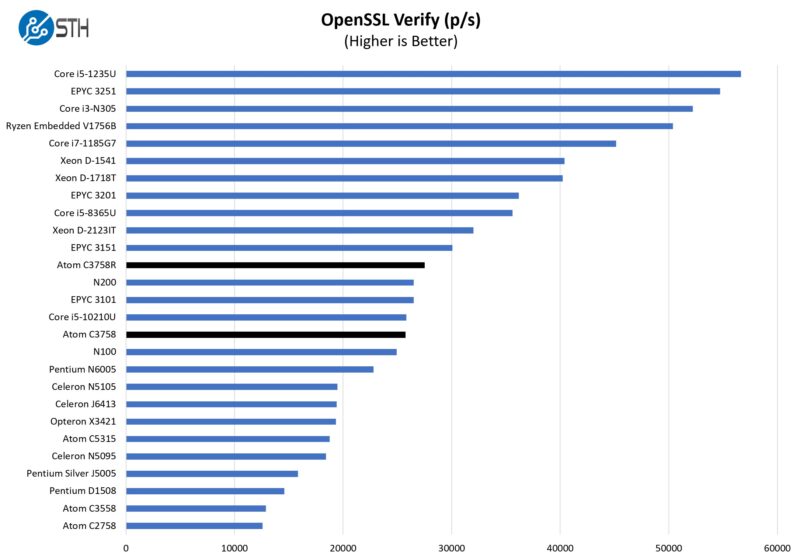
Again, we do not do these charts with QAT, but the performance is solid. With QAT, these go from eight core workloads to a portion of a single core, and increase in performance.
Next, let us discuss power consumption.
Power Consumption and Noise
The PSU that came in this unit is the Mean Well LRS-50-12 a 12W 50V unit. This is a lot better than many of the low-end PSUs we have seen previously.
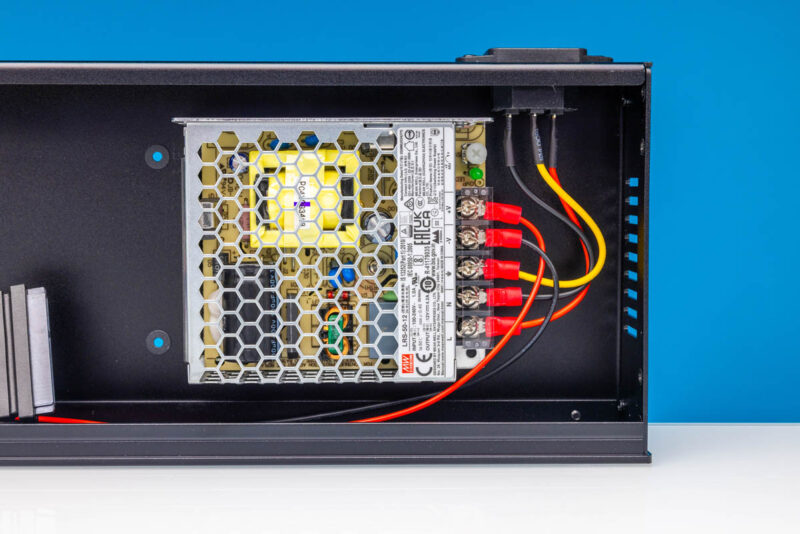
Something that we checked is that you can use a DC power input, even though there is an internal power supply. If that internal power supply were to ever break, for example, then there is an external power option.
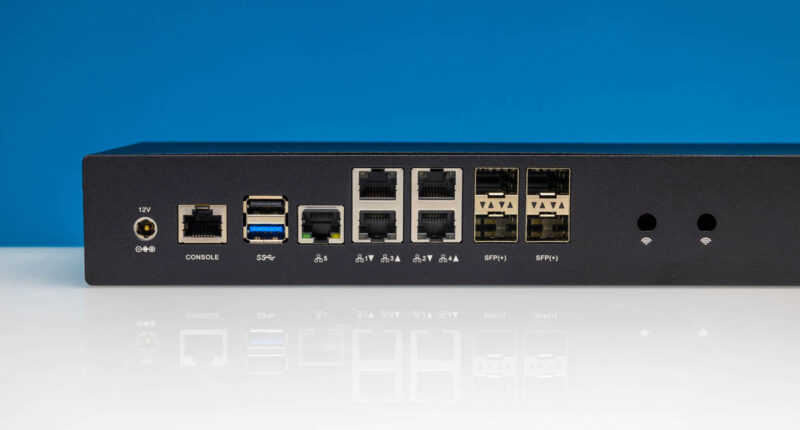
On the power side, at saw idle in the 20W range and go up to around 30W under load. Of course, with additional components installed, this can go up by 10-15W. On the noise side, it is far from silent. At idle we saw around 36dba and under load closer to 40dba. In a rack, a lot of this noise is going to depend on what is underneath the system since that is where the fan is.
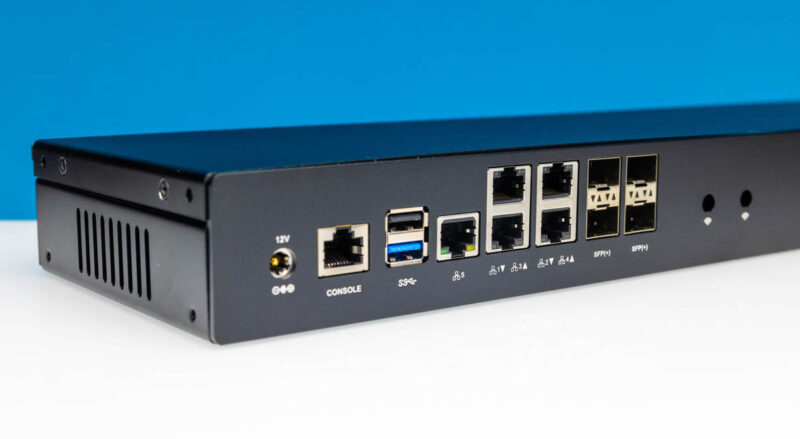
We also hooked one of the fanless unit external power supplies to the 12V connector on the front of the system, and it worked, actually providing 1-1.5W lower power consumption. It seems like between the fan and the internal PSU we are getting 1-4W higher during use on the rackmount versus the fanless desktop unit.
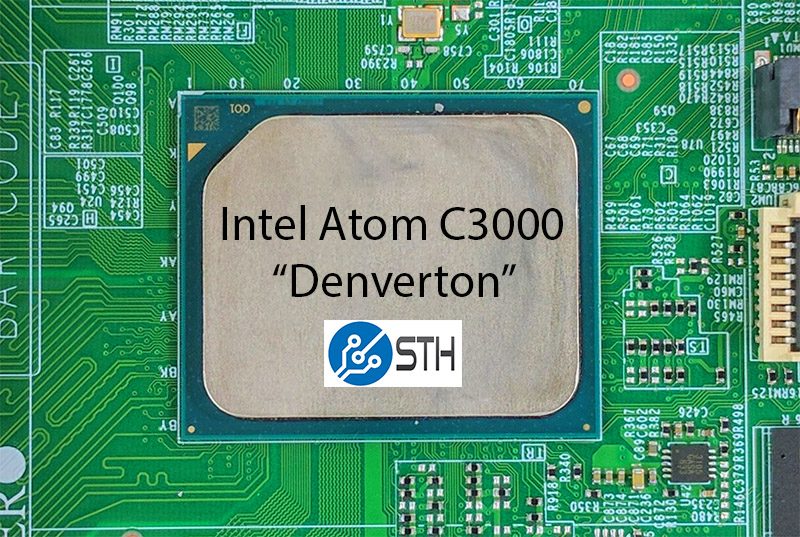
One important note on the Intel Atom C3000 “Denverton” chips is that they are embedded parts meant specifically for embedded applications. That means they are rated to run up to 82C Tcase. They also have very small idle-to-load frequency differentials. This system just runs at 2.4GHz non-stop under load and the cores do not step down. By keeping consistent power states and frequencies, the cores do not have to pause for a few cycles to spin up or down, and that improves network consistency, reducing things like jitter. A Core i5 may be faster, but these are chips designed explicitly for 10GbE network and storage.
Next, let us get to some thoughts on customization.

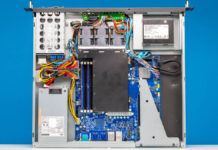
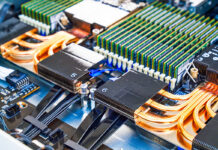
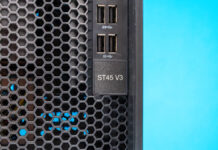
That’s an amazing configuration, and the ECC option was critical to include IMO. I have three Supermicro boxes configured as a 3-node cluster. Each include multiple SFP+ and Intel i350 ports and support ECC. I upgraded all of them with 128GB RAM, three NVMe’s, and a dual port 25GbE Mellanox card.
This is why I think the MINISFORUM MS-01 falls short of practical deployments in a homelab, because without ECC support, the true potential cannot be realized. The MS-01 is a great machine, but was a missed opportunity—hopefully the MS-02 includes ECC.
Everything in 1 box eh? A hacker’s dream come true!
Thanks for the great job STH team is doing
As you mentioned the NVMe area gets really hot that is why it is important to use low performance NVMe to manage heat. In my Mini PC I mounted 3x80mm FANs & replaced the bottom cover with a mesh just to keep that area relatively cold. I think this 1U setup it is great but it would be better if they made a mesh to mount tow fans instead of the WiFi antenna holes
Again thanks a million
My fanless non-rackmount model came with a Channel Well Technology (CWT) PSU, so even those seemingly no longer come with no-name PSUs, at least not all the time.
A rackmounted box, where the power switch is at the back of the box. That will work just fine.
What sfp to rj45 modules can be used with one of these??,,,
Thanks
My only problem with this is that the new E-cores are twice as fast as these. It’s a hard value prop when the N305 is more than twice as fast and uses less power. It feels like there will imminently be a new C-series line and that any C3000 series is already obsolete.
Granted, that’s somewhat hyperbolic, I do understand the differences between the N305 and the Cx000 atom lines (I have 3x C3758 systems in my lab today).
But I hope you see my point; the C3000 series is getting quite old to be part of greenfield deployments. Unless you need the crypto throughput or >2.5G networking, I’d add an N305-based system to my lab before any C3000-based systems.
How is the power supply connected to the motherboard? All the pictures show the wires disappearing under the board, but I do not see any connector in the picture of the underside.
page 3: “Mean Well LRS-50-12 a 12W 50V unit”
Should that be a “50W 12V unit”?
I have the fanless version, installed 32GB ECC RAM and also noticed the long boot time. I’m wondering if they ever disabled a lot of extra memory training/margining tests that developers usually use before release. It doesn’t hurt to have all that extra training enabled, but the value is debatable in a production system.
I would like to see also Wireguard perfomance tests.
To my knowledge it relies purely on CPU power so that would be a nice datapoint.
How does the 1U unit handle thermally vs the fanless “desktop” unit?
I wouldn’t buy any C3xxx based system at this point. Too slow vs Nxxx options.
Why would you have a fan on the bottom of a rack mount unit? It will be blocked by whatever is mounted below.
In the review the PSU specs are mixed. It’s 12V and 50W, not 12W and 50V
TBH, ECC is pointless for networking usage, thus I’d rather have more horsepower of MS01.
How about putting a m2 to sff8087 adapter in there as well? Then you could connect to that 8 drive external housing and access all drives
Does the AST2400.firmware in this provide KVM over IP?
Has anyone installed VyOS or what do you use for routing on these? Also some people complained about the CPU being slow compared to other options… are any of these other options available in rackmount or with 10GbE?
Does the ASPEED AST2400 BMC chip provide an actual IPMI functiion? Or is there vPro/AMP on the system?
@Jason Nxxx processors don’t have Intel QAT like the C3xxx processors do, so they’re not as good for routing or encryption.
I see a C3808 12 core processor option. But on the 12 core version, its has SFP vs SFP+ ports. Seems odd, anyone order the C3808 version?
I’m not getting 5gbps symmetrical with my box. It’s less than half that with no scanning on for Untangle and S+RJ10 modules.
Ended up going with a protectli vault 6.
I have just purchased the C3808 version. I contacted Qotom directly and they confirmed to me the 4x ports are indeed 10G SFP+. I’ll get back if somehow that is not the case once I have received the item.
If you are looking for an additional SATA cable, I believe this will get you pointed in the right direction: “PH2.0 Small 4Pin Combo 7+15 Pin”. (I have not received mine yet to verify.)
Hey, thanks for the review! I’m considering migrating my current pfsense setup from a old server to one that has SPF and higher throughput because they are starting to install 10Gbit fiber around here.
I have a question about this board (or boards with SPF in general). My current setup involves a ONT that outputs 1Gbps via Ethernet and a router with 4x1Gbps Eth ports (1 for WAN). Can I use one of the SPF+ ports for WAN and avoid having another piece of hardware to do the conversion? That way I can just plug the fiber cable to this board and use the SPF ports to connect to my switch (which has SPF up to 10Gbit and 2.5 Ethernet ports). I have been searching for information about such a setup but haven’t found anything and I don’t want to risk the buy before being sure I can do the setup I want.
Thank you!
I received my PH2.0 small 4-pin cable with integrated data wires from AliExpress and was disappointed to find that the SATA data plug is a right-angle connector that is bent in the wrong direction and there is really no way that it fits on this motherboard. It is shown accurately in the pictures but it didn’t even cross my mind that this would be an issue. So I have now ordered a separate power-only cable.
In the video, a bug regards connecting the SFP port to a switch using a Debian OS is mentioned.
I would want to connect two of the SFP ports to my switch, one for the LAN side interface and one for the Proxmox management interface. Given Proxmox is on Debian, my understanding is this is not possible (although maybe passthrough of one to OPNSense would allow the LAN connection).
Can anyone advise on this – have people succesfully used the SFP ports connected to a switch with Proxmox and/or hardware passthru with OPNSense?